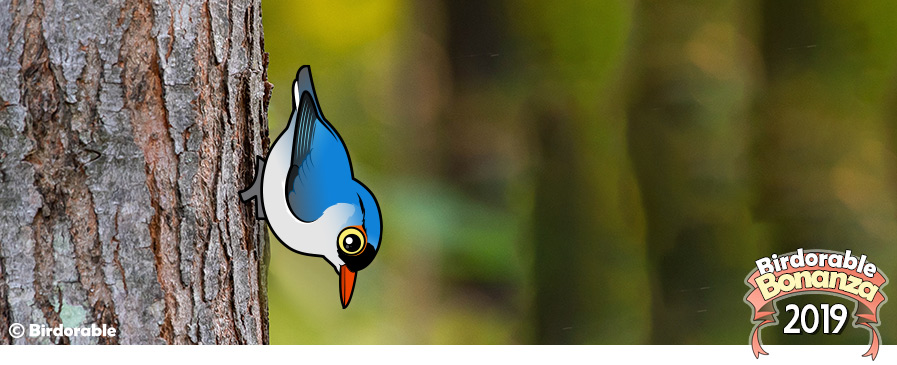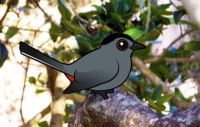2019 Bonanza Bird #7: Velvet-fronted Nuthatch

Today's new species in our 2019 Birdorable Bonanza is a colorful member of the nuthatch family: the Velvet-fronted Nuthatch!
Nuthatches typically have a muted plumage, with a mix of black, white, and slate often in the mix. This bird doesn't follow that convention, with its aquamarine upperparts, bright red beak, and yellow eye, this bird is a knockout!
The Velvet-fronted Nuthatch ranges across a variety of forest types throughout southern and central Asia. They are the only kind of nuthatch on Borneo.
Velvet-fronted Nuthatches feed mainly on insects and spiders. Typical for nuthatches, they forage by walking up and down tree trunks in search of food.
Tomorrow we'll add a species of parrot with a fun nickname based on its (lack of) facial plumage. Do you know the bird?






Comments
Be the first to comment
Thank you!